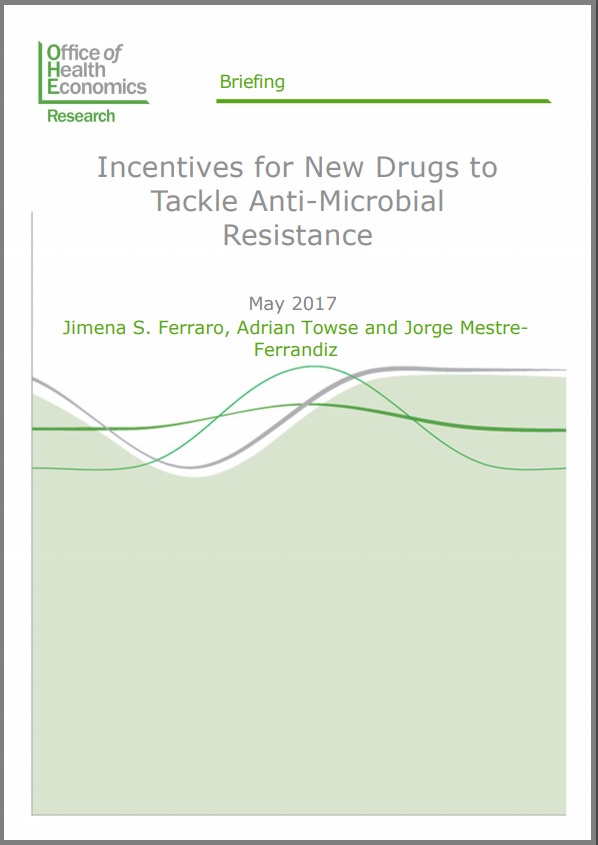Multi-indication pricing (MIP) involves setting a different price for each major indication approved for a medicine. We explore the feasibility of implementing MIP in the UK.
Just published is an OHE Briefing on the topic of multi-indication pricing. The briefing contains a summary of a workshop organised and facilitated by OHE and MME Europe.
Multi-indication pricing (MIP) involves setting a different price for each major indication approved for a medicine. As value is likely to differ across major indications, if prices paid for on-patent medicines are to reflect their value, then multi-indication medicines should have different prices across major indication, reflecting different values.
- There is a need to explore new flexible, pricing, schemes for (at least) two reasons:
- Many medicines currently available, and many more in pharmaceutical industry pipelines, are likely to be effective in multiple indications. This is a particularly important issue in cancer.
- Most national pricing and reimbursement systems are not equipped to handle differential pricing at indication level. There tends to be one single (uniform) price across all indications.
A potential solution?
Alternative pricing strategies that allow separate and distinct prices to be paid for major patient subgroups and indications, based upon the value demonstrated in clinical trials and real-world settings, may be preferred by stakeholders, including payers, health technology assessment (HTA) bodies and manufacturers.
MIP could take various forms, depending on how it is administered, applying at “list” or “net” price. “List” prices are the official ex-factory prices published in the relevant national databases. Different selling prices by indication could apply at the “visible” (i.e. official ex-factory) price level. “Net” prices are actual prices paid after any discounts and/or rebates provided by the manufacturer. Applying MIP to “net” prices could involve varying net selling prices by indication by either (i) applying differential discounts or (ii) using retrospective manufacturer rebates after monitoring use of the drug by indication. Such discounts are typically “invisible” (i.e. confidential).
Is MIP possible in the UK?
A workshop with health care system stakeholders was organised to explore (i) the attractiveness of MIP as a potential solution to the challenge of providing optimal pricing for, and reimbursement of, multi-indication drugs and (ii) the feasibility of implementing MIP in the UK’s National Health Service (NHS). The workshop agreed that relative prices should reflect relative value, with prices for any indication not exceeding value, and thus MIP might be a way forward.
However, a number of operational challenges need to be overcome. These fall under two general headings
- Whether the NHS can handle MIP schemes. This could involve variable net selling prices by indication, requiring monitoring of volume usage per patient per indication, with a financial reconciliation ex post to ensure that the correct funds flow between the stakeholders, be it at national or local level
- Data availability: are there data sets which allow such monitoring of volume usage per patient per indication, and is the necessary data being generated routinely or requiring ad hoc intervention? There is a UK collaboration to pilot, in oncology, the feasibility of MIP in the UK setting, based on the NHS’s Systemic Anti-cancer Therapy (SACT) data set.
Reflections and conclusions
Handling pricing for drugs with multiple indications within the same disease area – including different potential lines of treatment and/or combination regimens – is a challenge. A necessary condition for the implementation of MIP-type schemes (with the possible exception of ex ante simple discounts that “blend” the prices for different indications) is the potential to track the specific utilisation of the drug in different indications, regimens and patient sub-populations. The UK collaboration referred to above suggests this may be achievable.
On Tuesday 27 October, the Accelerated Access Review published their interim report. Their Proposition 2 (“Getting ahead of the curve”) reflects on the need to explore flexible approaches to pricing and reimbursement. We welcome this direction of travel, with MIP being one of the approaches that could be adopted.
Access the full briefing here.
For more information contact Dr Jorge Mestre-Ferrandiz at OHE.
